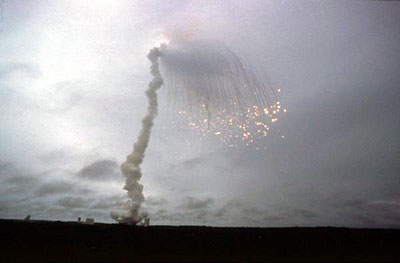Letter: Some do show tragedies while others complain about sinsby Peter C. Klanowski
|
| Probably neither a single TV station nor a single newspaper in Europe cared about the press release that was published after the Ariane 5 accident. |
After lengthy footage apparently taken from a balcony somewhere near ground control using a hand-held camera, there was finally a cut back to the control room where Guiana Space Centre director Michel Mignon—speaking through a translator—clearly stated that “for an as yet unknown reason the launch vehicle exploded in flight [at] 4,000 metres height after lift-off, and the fragments fell back in a zone that was protected. I can reassure you there is nobody in these protected areas.”
Rocket exploded, nobody injured—this is as much information as you might expect less than half an hour after such an incident, isn’t it? Probably neither a single TV station nor a single newspaper in Europe cared about the press release that was published later and which Dr. Day complains about. The media not only in Europe but also in every other part of the world had juicy pictures of the explosion almost immediately after it took place.
Arianespace acted similarly in the case of another major failure, that of the first “10-tonne” Ariane 5 ECA on December 11, 2002. (It was not as spectacular as Ariane Flight 501 because there was no explosion to be seen—the failure was caused by the second stage at a much higher altitude.) Again the launch broadcast was not cut off, and officials made statements shortly afterwards clearly admitting that the launch was a failure. For instance, Arianespace CEO Jean-Yves LeGall noted that “tonight’s failure is very serious.”
As far as I know, ESA and Arianespace never flicked the switch if something went wrong and simply stopped broadcasting, even at the risk of getting short-term bad coverage in the form of exploding rockets displayed on almost every TV screen around the world. Compare that to Sea Launch’s recent PR work, especially the cut-off launch broadcast.
At least Sea Launch hasn’t adopted previous practices of some of the joint venture’s partners. During the launch of twelve Globalstar satellites aboard a KB Yuzhnoye/PO Yuzhmash Zenit 2 in September 1998, the Ukrainian launch commentator kept on reading a prefabricated script describing a normal ascent, leading Globalstar representatives present at the Baikonur cosmodrome to think the flight had been successful while in fact the rocket had exploded only five minutes after lift-off.
